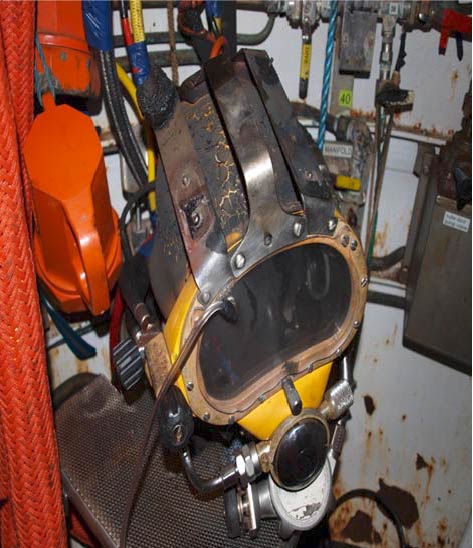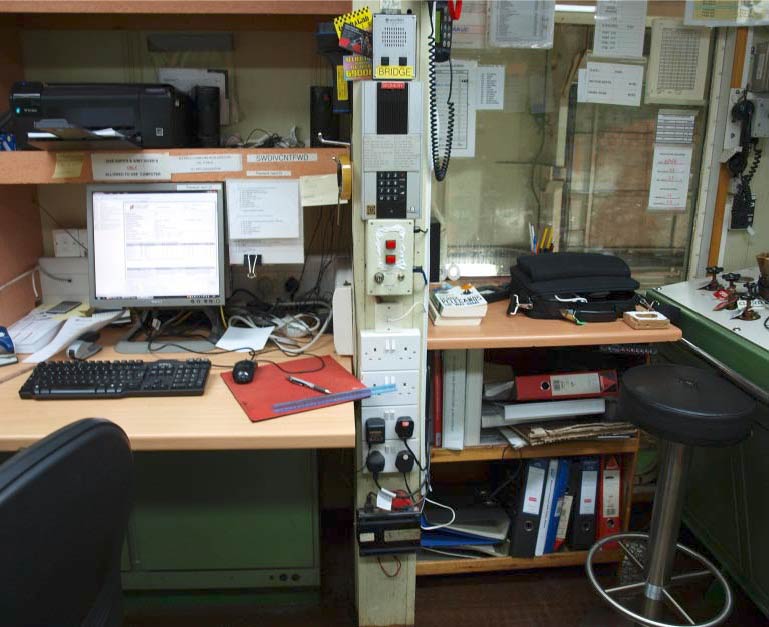Diver helmet hat light
A member has reported an incident in which an overheating diver helmet hat light nearly caused a fire inside a diving bell onboard a dive support vessel. The diving bell was not under pressure and the bottom doors were open to atmosphere. A report was made of a strong smell of smoke within the dive control area. This was investigated and smoke was observed coming from the forward diving bell, situated within the bell garage. The dedicated emergency teams were mustered and the appropriate emergency response actions instigated. The fire in the diving bell was successfully extinguished. There were no injuries. The fire resulted in extensive damage sustained to a Kirby Morgan 17B helmet, light, camera and associated umbilicals.


An investigation established that the source of the fire was a dive helmet hat light which overheated to the point that the outer casing caught fire. The light overheated because it was inadvertently switched on whilst the equipment was on the surface and without any type of cooling in place, such as seawater.
The helmet light is operated via a surface mounted push button located in dive control forward of the dive control panel. Some twenty-five minutes before the incident occurred, the dive crew had held a short meeting in the immediate vicinity of the push button switch box that controls the helmet lights in the forward bell for both diver 1 and 2. It was surmised that during this meeting an attendee inadvertently leaned against the push button switch and turned on the helmet light. Nearly half an hour elapsed before the first smell of smoke was reported.
The lessons learnt were as follows:
- There were no safeguards to prevent the activation of the push button controlling the helmet hat light. Temporary protection was put in place on the switch box, and the control boxes replaced with guarded switches to prevent inadvertent activation;
- The hat light would overheat without seawater cooling, and consequently should not be used for long periods in air. A new design for this model of light incorporates a positive temperature coefficient (PTC) thermistor device which prevents the unit from overheating.
Safety Event
Published: 23 December 2011
Download: IMCA SF 14/11
IMCA Safety Flashes
Submit a Report
IMCA Safety Flashes summarise key safety matters and incidents, allowing lessons to be more easily learnt for the benefit of all. The effectiveness of the IMCA Safety Flash system depends on Members sharing information and so avoiding repeat incidents. Please consider adding [email protected] to your internal distribution list for safety alerts or manually submitting information on incidents you consider may be relevant. All information is anonymised or sanitised, as appropriate.
IMCA’s store terms and conditions (https://www.imca-int.com/legal-notices/terms/) apply to all downloads from IMCA’s website, including this document.
IMCA makes every effort to ensure the accuracy and reliability of the data contained in the documents it publishes, but IMCA shall not be liable for any guidance and/or recommendation and/or statement herein contained. The information contained in this document does not fulfil or replace any individual’s or Member's legal, regulatory or other duties or obligations in respect of their operations. Individuals and Members remain solely responsible for the safe, lawful and proper conduct of their operations.
